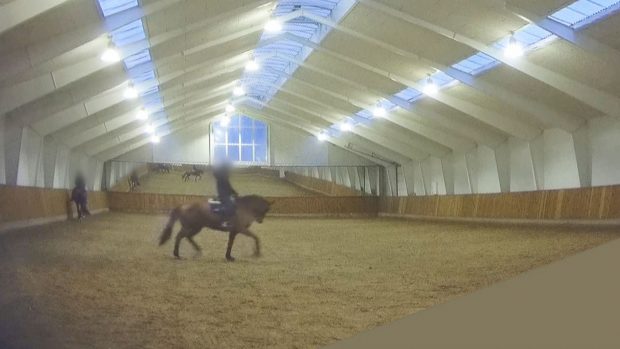The Dutch Equestrian Federation (KNHS) has launched an investigation after photographs showing Dutch dressage team pony Power And Paint being lunged in short side-reins were published in a Swedish magazine.
The pictures, published in Tidningen Ridsport at the end of September, show Olympian Coby van Baalen and pony rider Angela Krooswijk, 15, lungeing Power And Paint in a very round, deep neck frame. French photographer Gilles Levesque took the images at the European Pony Championships in Freudenberg, Germany, from 20-22 July.

Coby van Baalen responded in a statement: The photographer took these pictures in the first minute of the lunge with Power And Paint and they do not tell the whole story. It serves no purpose to lunge in this way and this was a one-off incident, which lasted no longer than half a minute. This is not our daily training mode.
But the photographer claims that the pony was being lunged in this way for 10min and then another 10min with the reins lengthened a few holes.
The KNHS has appointed prosecutor Aukje Kroondijk to interview all parties, saying: The KNHS believes the welfare of the horse should be the starting point for every aspect of horse sport.
The Dutch Animal Welfare Society (Dierenbescherming) has also reacted strongly, saying the low, deep and round practice was questionable.
In a statement, the society said: Last week there was commotion in the horse world over photographs where a pony appears to be maltreated, with his chin restrained on his chest.
This is a regular occurrence. It is an extreme form of what is known in the horseworld as low, deep and round, a practice we find questionable.
The organisation hopes the issue will be raised in a welfare statement to be released by the Dutch government later this month.
Angela and Power And Paint finished fourth at the European Championships.
In 2005 German magazine St Georg criticised Dutch Olympic Champion Anky Van Grunsvens training methods and suggested that riding a horse in this deep neck position referred to as rollkür was harmful. The FEI launched an investigation into the training method in February 2006. Read the FEI’s findings
This news story was first published in Horse & Hound (11 October, ’07)




